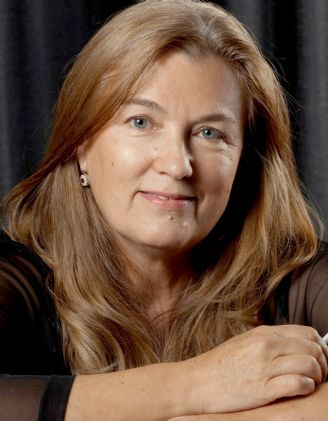|
Symphony
FROM THE NEW WORLD TO THE OLD WORLD
by Peter Lert
Saturday, June 14, 2025
Chamber
MC2 DUO RECITAL CLOSES 222'S SEASON
by Terry McNeill
Saturday, June 14, 2025
Choral and Vocal
CANTIAMO SONOMA'S LUSCIOUS A CAPELLA SINGING IN SEASON ENDING CONCERT
by Pamela Hicks Gailey
Sunday, June 8, 2025
Symphony
SRS SEASON ENDS WITH RESOUNDING TA-TA-TA-BANG
by Terry McNeill
Sunday, June 1, 2025
Symphony
YOUTHFUL VIRTUOSITY ON DISPLAY AT USO'S MAY CONCERTS
by Peter Lert
Saturday, May 17, 2025
Symphony
MYSTICAL PLANETS AND LIVELY GERSHWIN ORTIZ AT FINAL SRS CONCERT
by Peter Lert
Sunday, May 4, 2025
Symphony
VSO'S CONCERT MUSIC OF TIME, MUSIC OF PLACE
by Peter Lert
Sunday, April 27, 2025
VOCAL ELEGANCE AND FIRE AT THE 222'S RECITAL APRIL 26
by Pamela Hicks Gailey
Saturday, April 26, 2025
CANTIAMO SONOMA SINGS AN INSPIRED GOOD FRIDAY MOZART REQUIEM CONCERT
by Pamela Hicks Gailey
Friday, April 18, 2025
DRAMATIC SHOSTAKOVICH SYMPHONY CLOSES PHILHARMONIC'S 25TH SEASON
by Terry McNeill
Sunday, April 13, 2025
|
 |
 College of Marin Orchestra Conductor Tara Flandreau |
TWO HALVES WITH A FEW HOLES
by Terry McNeill
Sunday, November 22, 2009
After many decades of attending concerts, a listener (or reviewer) faces a tough decision after hearing a first half that in some way is not a complete artistic whole. Leave early or stay for the promising second part? In almost every case not hearing the music that follows intermission would be a mistake. It was thus at the College of Marin (COM) Symphony Orchestra’s concert Nov. 22 at Unity Church on the old Hamilton Air Force Base.
Just two works comprised the program, the first being the most popular of all piano concertos, Tchaikovsky’s No. 1 in B Flat, Op. 23. COM faculty pianist Paul Smith made a heroic effort as the soloist to make the best of a less-than-ideal set of circumstances. The hall, packed with extra seats in the aisles, was overly bright with a long reverberation. The piano was not of professional caliber, and the orchestra, under the baton of Tara Flandreau, experienced pesky intonation problems and inconsistent brass playing. That said, the first movement unfolded with pliant string sounds, fluent but conventional phrasing from the conductor, and the wonderful clarinet playing of David Treganowen. Mr. Treganowen, along with flutist Bruce Salvisberg and bassoonist Karen Wright, played elegantly all afternoon. Mr. Smith’s cadenza, using a lot of pedal in an attempt to generate sound from the instrument, was in the grand manner if not in the middle of the Russian romantic tradition.
In the Adagio, the orchestra’s persistent covering of the soloist disappeared, and a more satisfying interplay of lines appeared. The long trills from the piano were evenly shaped, and the fetching themes were stated with dignity.
Tchaikovsky’s concluding movement has equitable balances between the piano and orchestra, and Ms. Flandreau was in no hurry to get anywhere. Right up to the famous ascending forte octave passage for piano, the orchestra played well. Mr. Smith made the most of these octaves, using half-pedal and getting as much sound as the instrument would give. He didn’t choose the left-hand octave tremolo at the final tutti. A standing ovation ensued.
Shostakovich’s Fifth Symphony is a daunting prospect for a non-professional orchestra, the technical demands to the last desk heavy and nearly always exposed. But the 1937 work brought a sharply different orchestra than was heard in the Tchaikovsky, the attacks and releases more sure, the strings more resonant. There was more security of pitch for the brass section, and the addition of the accompanying piano and electronic celesta was welcome. In the opening Moderato, the big sound was clear, and the tempo was steady. Piccolo soloist Dawna Stebbins played with penetrating clarity. Virtuosic playing in the second movement came from Ms. Wright and from the pizzicato unisons in the strings.
The long Largo, a precursor to Hovhanness’ “Mysterious Mountain” Symphony, was taken at an overly relaxed tempo, but it also left plenty of time for the counterpoint from Messrs. Salvisberg and Treganowen and the beguiling harp playing of Michelyn French. A threnody, the sad march moved deliberately along, the harp and celesta parts in a duo which echoed much of the composer’s more dissonant and longer Fourth Symphony (1936).
Ms. Flandreau brought to the Allegro non troppo the requisite power, the return of the march theme again having the benefit of precision string playing and the reiteration of the “A” notes in the violins. The tympani solo (Robert Jakubs) was positively militaristic, a sober introduction to the carnage of the finale, where Ms. Flandreau carefully slowed the tempo to the last potent chords, holding the audience breathless.
Shostakovich’s mighty creation always generates a standing ovation, and it received one here.
|

